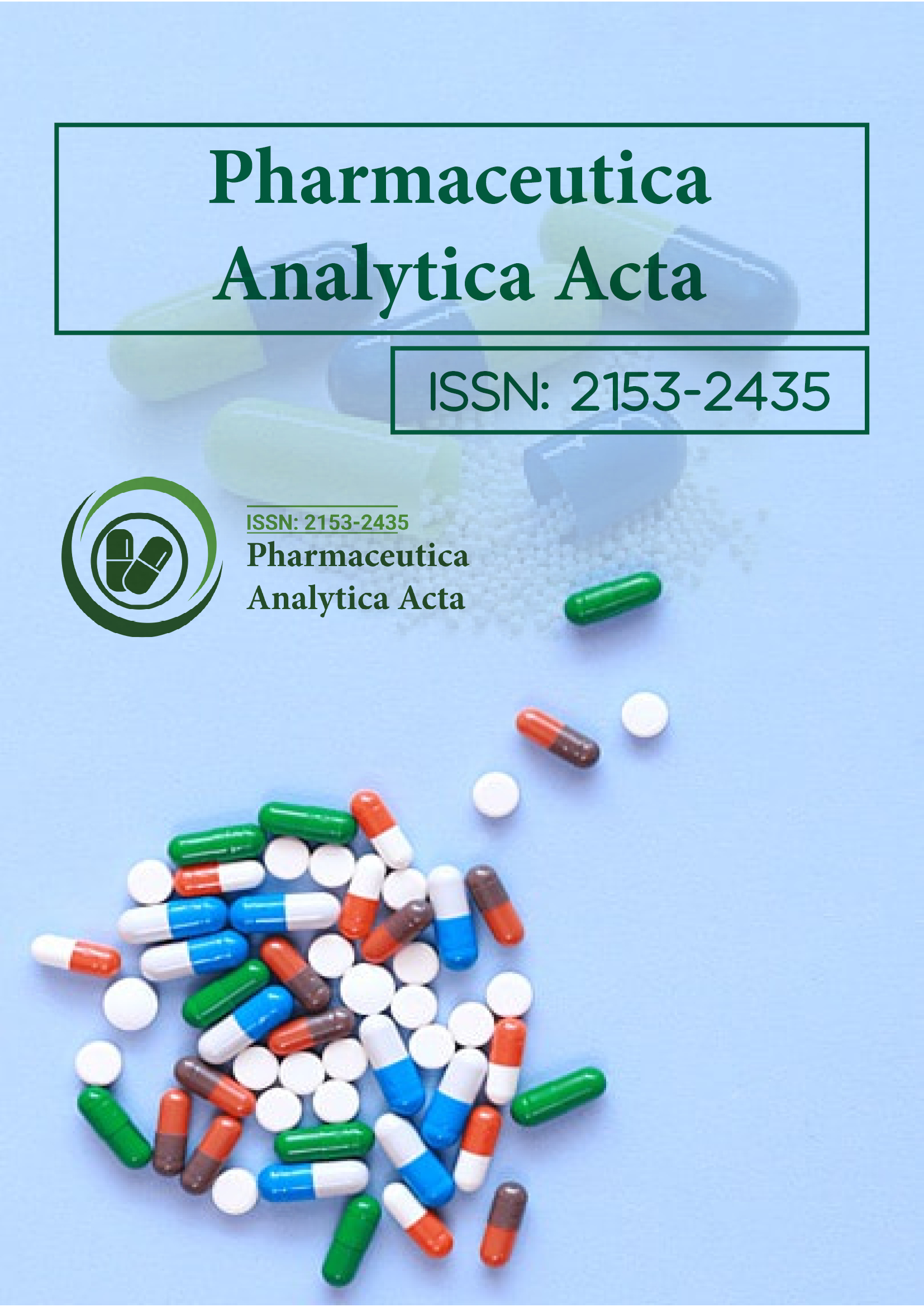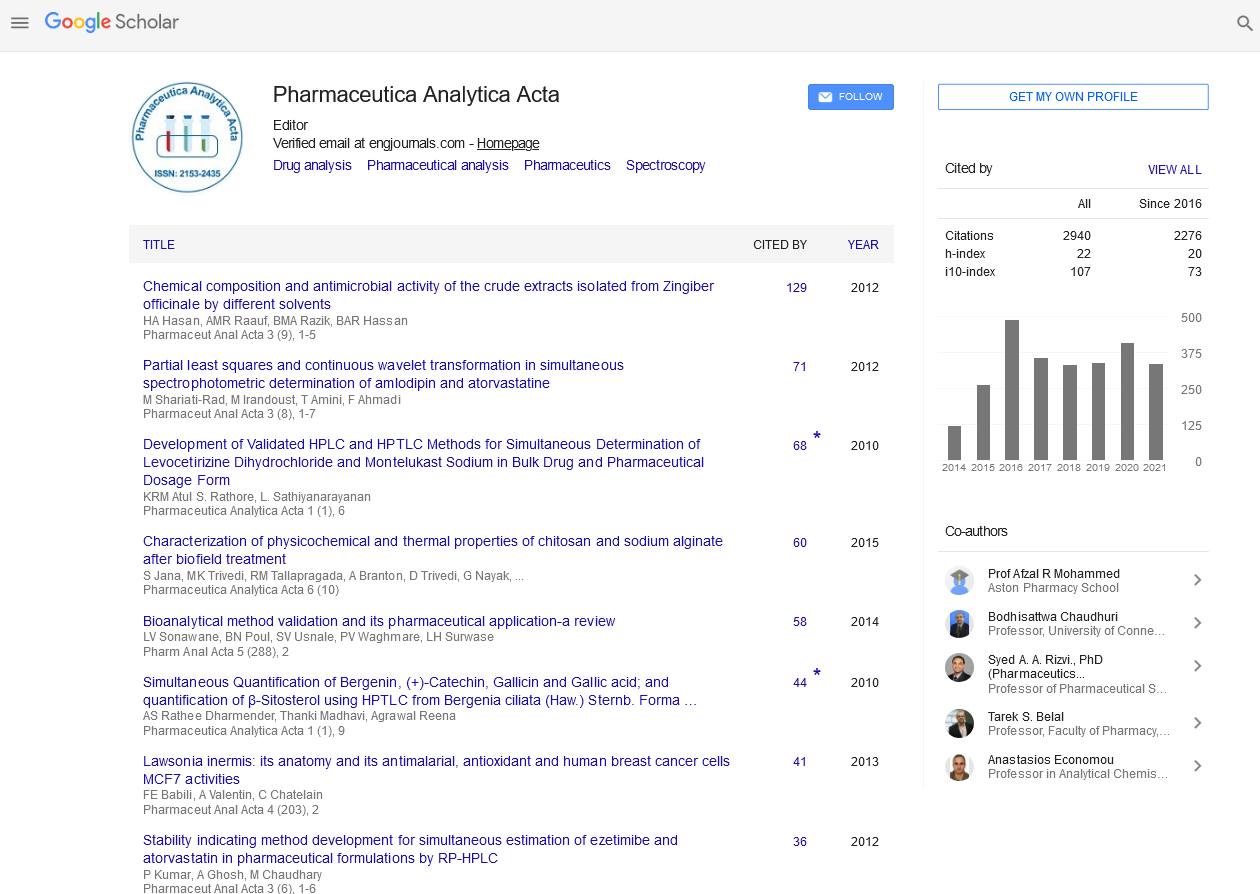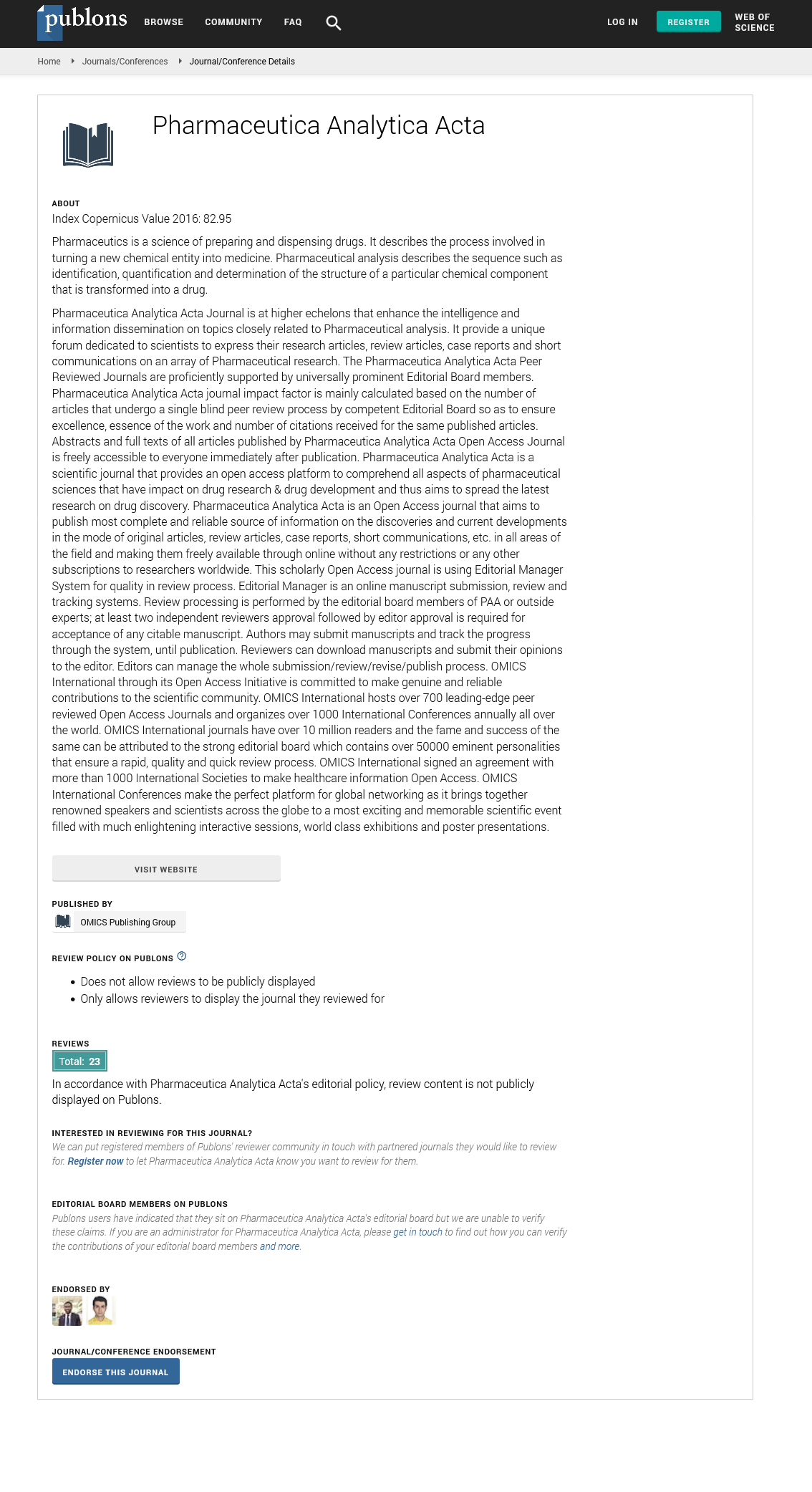Indexed In
- Open J Gate
- Genamics JournalSeek
- Academic Keys
- JournalTOCs
- The Global Impact Factor (GIF)
- China National Knowledge Infrastructure (CNKI)
- Ulrich's Periodicals Directory
- RefSeek
- Hamdard University
- EBSCO A-Z
- OCLC- WorldCat
- Publons
- Geneva Foundation for Medical Education and Research
- Euro Pub
- Google Scholar
Useful Links
Share This Page
Journal Flyer

Open Access Journals
- Agri and Aquaculture
- Biochemistry
- Bioinformatics & Systems Biology
- Business & Management
- Chemistry
- Clinical Sciences
- Engineering
- Food & Nutrition
- General Science
- Genetics & Molecular Biology
- Immunology & Microbiology
- Medical Sciences
- Neuroscience & Psychology
- Nursing & Health Care
- Pharmaceutical Sciences
Commentry - (2022) Volume 13, Issue 5
Supplementary Technology of HPLC and Gas Chromatography
Elawady Belal*Received: 02-May-2022, Manuscript No. PAA-22-17096; Editor assigned: 06-May-2022, Pre QC No. PAA-22-17096 (PQ); Reviewed: 23-May-2022, QC No. PAA-22-17096; Revised: 31-May-2022, Manuscript No. PAA-22-17096 (R); Published: 07-Jun-2022, DOI: 10.35248/2153-2435.22.13.673
Description
High-performance liquid chromatography has replaced several spectroscopic approaches and gas chromatography in the quantitative and qualitative analysis of pre-sale procedures, drug marketing, and drug control. HPLC was first intended to be a supplementary technology to gas chromatography, but it has now practically fully superseded gas chromatography in pharmaceutical analysis. In compared to other approaches, using a liquid mobile phase with the ability to change mobilized polarity during chromatography and make other mobile phase alterations based on the characteristics of the chemical being tested offers a significant benefit in the separation process [1].
The goal of high-performance liquid chromatography (HPLC) drug analysis is to authenticate a drug's identity and offer quantitative data, as well as to track the progress of a disease's treatment. The creation of a non-aqueous eluent for ion exchange separation on silica has resulted in an excellent technology that, when combined with an electrochemical detector, allows for the analysis of a wide range of metabolites and drags, particularly basic ones. The development of a non-aqueous eluent for ion exchange separation on silica has provided in an excellent technology that, when combined with an electrochemical detector, allows for the analysis of a wide range of metabolites and drags, particularly basic ones [2].
It could also be used to further our understanding of normal and pathological processes in the human body through biological and therapeutic research during investigation to the approval drugs registration.
One of the most demanding but ubiquitous applications of high-performance liquid chromatography is the analysis of medicines and metabolites in biological fluids, particularly plasma, serum, or urine. Blood, plasma, and serum include a plethora of endogenous chemicals, many of which are present at considerably higher amounts than the analytic [3]. The concentrations of analytics are frequently low, and in the case of pharmaceuticals, endogenous chemicals can be structurally extremely similar to the medication being evaluated. In gas-liquid chromatography, a solution sample containing organic compounds of interest is injected into the sample port and vaporised to separate the compounds. The injected vaporised samples are then carried by an inert gas, which is commonly helium or nitrogen. This inert gas passes through a liquid-coated glass column filled with silica [4]. The outcome will increase faster for materials that are less soluble in the liquid than for materials that are more soluble. The goal of this session is to provide you a greater grasp of separation and measurement techniques, as well as how to use them.
The liquid stationary phase is immobilized on the capillary tubing walls or adsorbed onto a solid inert packing in GLC. If the glass or metal column tube is filled with small spherical inert supports, the column is considered packed. The liquid phase forms a thin coating on the surface of these beads. The tube walls of a capillary column are coated with a stationary phase or an adsorbent layer capable of sustaining the liquid phase. However, because to strong peak tailing and the semi-permanent preservation of polar chemicals within the column, the GSC method has limited utility in the laboratory and is rarely utilised.
When a compound exists in multiple isomeric forms, it is frequently referred to as a mixture of isomers. Alternatively, samples of one isomer may need to be monitored to assure purity. In both circumstances, the ability to separate isomers using liquid chromatography is critical [5]. This is especially true with drag drugs, because isomers will almost always have differing pharmacological and occasionally toxicological effects. The significant teratogenic effects of the medication thalidomide (children born to mothers who had been taking thalidomide were born with shortened limbs) were related to one of the two enantiomers found in the drug substance, which sparked a lot of curiosity. Because enantiomers have the same physiochemical properties, they can't be separated by conventional chromatography.
REFERENCES
- Quan Wang. Fabrication of an allyl-β-cyclodextrin based monolithic column with triallyl isocyanurate as co-crosslinker and its application in separation of lipopeptide antibiotics by HPLC. Microchem. J. 2021; 168:319-328.
- Jessica Tan. Separation and quantitation of eight isomers in a molecule with three stereogenic centers by normal phase liquid chromatography. J. Chromatogr. A. 2018; 1538:108-111.
[Crossref] [Google Scholar] [PubMed]
- Fils Andriamainty. Analysis of positional isomers of 2-3-4-alkoxyphenylcarbamic acid derivatives by a combination of TLC and IMS. J. Chromatogr. B. 2021; 1184:78-85.
[Crossref] [Google Scholar] [PubMed]
- Yueer Shi. Direct and indirect separations of five isomers of Brivanib Alaninate using chiral high-performance liquid chromatography. J. Chromatogr. B. 2008; 875:122-135.
[Crossref] [Google Scholar] [PubMed]
- Lei Ni. Development and validation of a novel approach based on ultrasonic-assisted enzymatic extraction and RP-UHPLC for simultaneous determination of astaxanthin isomers and alpha-tocopherol in Haematococcuspluvialis derived supplements. J. Pharm. Biomed. 2021; 193:241-254.
[Crossref] [Google Scholar] [PubMed]
Citation: Belal E (2022) Supplementary Technology of HPLC and Gas Chromatography. Pharm Anal Acta. 13:673.
Copyright: © 2022 Belal E. This is an open-access article distributed under the terms of the Creative Commons Attribution License, which permits unrestricted use, distribution, and reproduction in any medium, provided the original author and source are credited.


